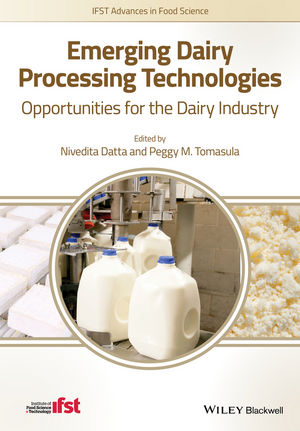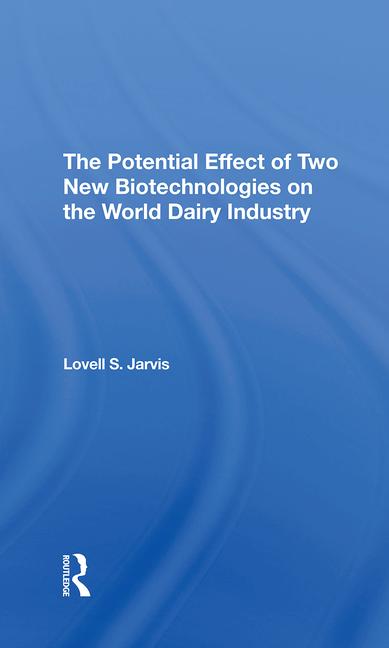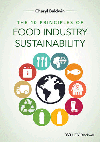Decarbonizing the dairy foods industry
There are many efforts that can be done now to do things like reduce greenhouse gas emissions.

For more than 2,000 years, the dairy industry has seen an incredible amount of creativity and modernization. From fermenting and processing to consuming dairy products, innovations have given rise to an industry that’s now worth about $900 billion and projected to surpass $1 trillion by 2024.
And the innovation is welcome, especially in a world where hunger and malnutrition, food accessibility, and nutritional disparity continue to plague entire countries. But there’s another problem that’s tugging on the dairy industry and it will require a new innovation that, I believe, the dairy industry is well-suited to bring about.
The Innovation Center for U.S. Dairy, founded by U.S. dairy farmers, has set environmental sustainability goals to achieve net-zero emissions by 2050. While the goal is aggressive, the dairy industry has already shown itself to be capable of radical change. For example, between 1944 and 2007, global milk yield has increased four-fold, resulting in a 63% drop in carbon emissions. In North America, the industry has reduced its greenhouse gas (GHG) emissions consistently year after year since 2005 while increasing production.
But more needs to be done — and fast, which is why we’re beginning to see industry leaders step up their efforts and adopt new sustainability practices. This is great news for the dairy industry, and the environment as a whole, especially if other organizations follow this strategy.
But there’s a lot of work that needs to be done if we are ever to see the dairy industry reach net-zero emissions. Currently, thousands of dairy processing plants across the globe still contribute large amounts of GHG emissions daily; and many of the organizations running these plants have made little progress in reaching their sustainability goals, largely because they’re waiting on a renewable silver bullet solution that hasn’t arrived just yet.
What can be done? Well, we know that renewable energy is not yet a viable solution from both a cost perspective and availability. There’s simply not enough energy to go around, and an industry-wide switch to renewables would overburden the current grid infrastructure and drive costs even higher.
The final piece of the puzzle lies within each factory’s thermal utility processes. Most of today’s dairy processing plants were built more than 50 years ago and have an immense opportunity to minimize waste heat and optimize efficiencies within each plant’s current processes. For example, food processing — particularly with dairy products — requires a significant amount of energy for sterilization and cold storage. Unfortunately, this leads to a lot of waste heat during the cooling process, while the factory simultaneously needs heat at relatively low temperatures (below 250 degrees Fahrenheit) to operate effectively.
With the technology that’s available today, we can map out these thermal processes with artificial intelligence- and internet of things-powered tools, find out where the heat is going, monitor performance and flag failures. Not only will this enable plant managers to make better, real-time automated decisions, experienced engineers can then take that information and develop a roadmap to full decarbonization.
The idea here is to minimize a plant’s energy waste, optimize its thermal energy efficiency and then build a strategy for complete decarbonization, and the dairy industry is uniquely suited to save an extraordinary amount of energy by doing so. In fact, dairy processors can reduce their carbon emissions by up to 80% by implementing an internal process heat exchanger network coupled with industrial high-temperature heat pumps. This strategy, known as Circular Thermal, recovers waste heat and displaces fossil-generated heat in a three-step process that includes de-steaming (conversion to pressurized hot water) all applications below 250°F; recovering direct heat when a positive differential temperature is available; and using industrial heat pumps for raising the temperature of low-grade heat to the temperature that is useful for the process.
In short, Circular Thermal takes the stream of waste heat and channels it back to the process where the energy is needed. Like I mentioned before, this optimization process can get you about 80% of the way toward decarbonization. The final 20% of GHG emissions can be removed with renewable sources at a much more reasonable capital expense, improving an organization’s bottom line and making it more competitive in the long run.
Our work with several Fortune 500 companies, across hundreds of global sites in various sectors, confirms this strategy as the most cost effective first step in the road toward decarbonization. It’s a practical, no regrets first step.
The dairy industry is ripe for innovation, and it’s time to recognize that the leaders of this industry have an opportunity to make real, lasting change right now; and put the next generation of dairy innovators on the road toward complete carbon neutrality.
The opinions expressed in this article are the author’s only. They do not necessarily reflect those of Dairy Foods ot its parent company BNP Media.
Looking for a reprint of this article?
From high-res PDFs to custom plaques, order your copy today!









